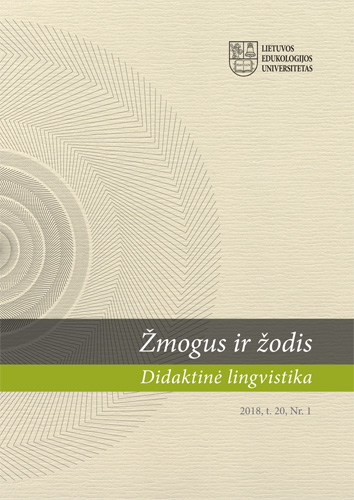Šiaurinių panevėžiškių patarmės daiktavardžio morfologinio proceso natūralumas
Naturalness of the Morphological Process of the
Northern Panevėžiškiai Subdialect
Author(s): Rasa KurkauskienėSubject(s): Morphology, Sociolinguistics, Baltic Languages
Published by: Vytauto Didžiojo Universitetas
Keywords: Northern Panevėžiškiai subdialect; natural morphology; constructive iconicity of case forms; vertical (form) syncretism; horizontal (inflectional) syncretism;
Summary/Abstract: In the Northern Panevėžiškiai subdialect, the forms, which are maximally or minimally iconic in the subdialect under analysis, dominate in the plural paradigms of all stems. The dative and instrumental are maximally iconic in the masculine plural declension (a, ia, u stems) paradigm, whereas in the case of the feminine declension (ā, ē stems), all the cases in the plural, with the exception of the genitive, are maximally iconic. Other cases of the plural paradigm of these declension types are minimally iconic (the nominative and genitive in the masculine declension and only the genitive in the feminine declension) or non-iconic at all (only the genitive plural of the masculine declension type falls into this category). The dative plural and the instrumental plural of the mixed declension if inflectional class are maximally iconic; the genitive case is counter-iconic and the remaining nominative and accusative cases are non-iconic at all. In the Northern Panevėžiškiai subdialect if stem nouns of barytonic accentuation have most of syncretic cases (seven singular case forms have four different endings, while six plural case forms have three different endings). The ia2, ā, iā and ē stem nouns have a comparatively high number of syncretic singular forms (seven singular case forms each have four different endings). a and u stems stand out from others by their lowest number of syncretic forms (both in the singular and plural paradigms). In summary, the subdialect of Northern Panevėžiškiai is dominated by three declension types: masculine (a, ia2, u stem nouns), feminine (ā, iā, ē stem nouns) and mixed (im, if, Cm, Cf stem nouns). The comparison of the paradigms of inflectional forms has shown that compared to the standard language, there are far more syncretised cases, non-iconic, and counter-iconic forms in the Northern Panevėžiškiai subdialect. It gives rise to the tendency of shifting from three (masculine, feminine and mixed) to two (masculine and feminine) declension types.
Journal: Žmogus ir žodis
- Issue Year: 20/2018
- Issue No: 1
- Page Range: 24-40
- Page Count: 17
- Language: Lithuanian

